Shimon Tayyar: "I've Been Tasked with Recreating Rabbi Ovadia's Room"
Shimon Tayyar managed a carpentry shop with many workers until he found faith. Then, he learned that "a person's sustenance is decreed from Rosh Hashanah..." At that moment, he let go of his employees and dedicated himself to crafting holy arks and wood carving. Take a look at his stunning creations.
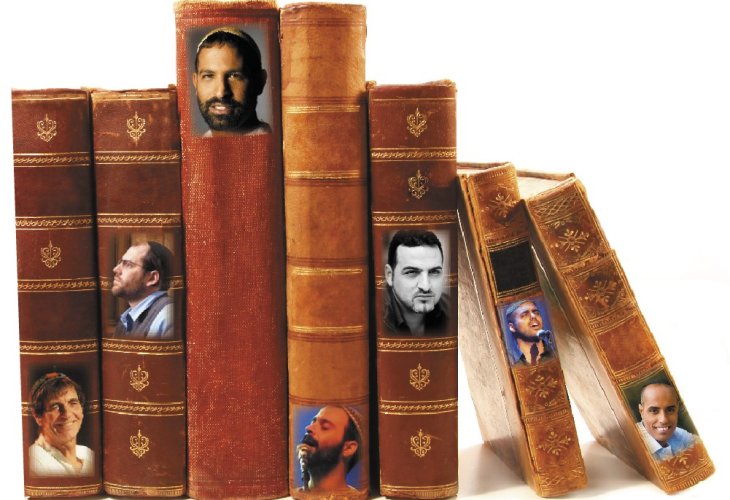 Shimon Tayyar
Shimon TayyarHe is sixty years old, and for as long as he can remember, he has been involved in carpentry and wood carving ; he is behind the masterwork at 'Maran Square' in Rechasim, where the desk of Maran with an open book and his turban are all carved from wood. Alongside these, stand three holy books, each three meters tall ; he also crafted many exquisite holy arks throughout the country, and he is now a nominee for the Minister of Education's Prize for Jewish Culture.
Meet Shimon Tayyar, who lives in Kfar Hasidim, where his carpentry shop is also located and serves as his second home. "I was born to a father who was heavily involved in carpentry and creation, and since I finished the army, I also began to work in this field," he says.
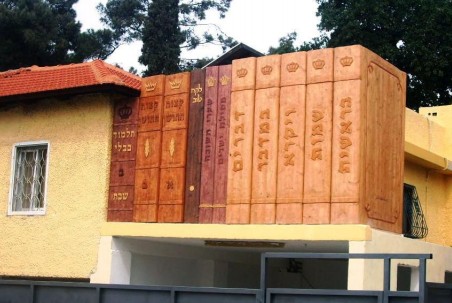 Facade of a house of a Torah scholar
Facade of a house of a Torah scholar"For years I worked in my private carpentry shop, building furniture for people, and mainly constructing sales booths in various shopping centers, as well as service stations in hospitals and so on. For instance, I built the news room of the 'Reuters' news agency, the cardiology center at Sheba Medical Center, and many stands in different pharmacy chains. I truly lacked nothing; I had a good name and success. I was in a period of incredible flourishing, receiving numerous orders and had reached my peak in every respect. I worked nationwide, and everyone knew I did special things."
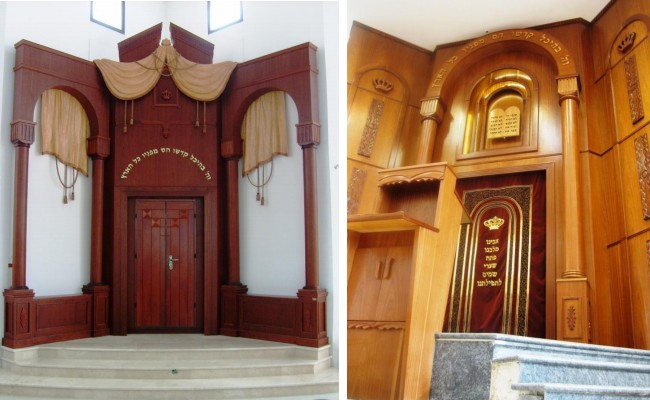
Yet, at the very stage where materially he received more than enough, Tayyar felt something was missing in his life. "It's not that I was in distress; rather, I felt I needed meaning and explanation for the life I was living," he explains. Thus began his initial steps toward Judaism. "I returned to faith gradually, one step at a time. Initially, I didn't know any rabbis, nor did I have anyone to consult with, so I simply entered a holy book store and saw the book 'The Path of Hashem' by the Ramchal. I read the book from beginning to end and felt as if it blew my mind. Right after that, I went back to the store and bought twenty more copies to give to all my friends, to introduce them to the book and to unveil the treasure I found. I then had the innocence of a newly religious person, thinking everyone would be interested in my exciting discovery."
But, as Tayyar notes, his closeness to the Creator didn't happen in a moment. "All this process occurred twenty years ago, slowly and with unceasing personal work, until eventually, my wife and I participated in a seminar that greatly strengthened us. Afterward, we were blessed to return fully to faith together with our three children."
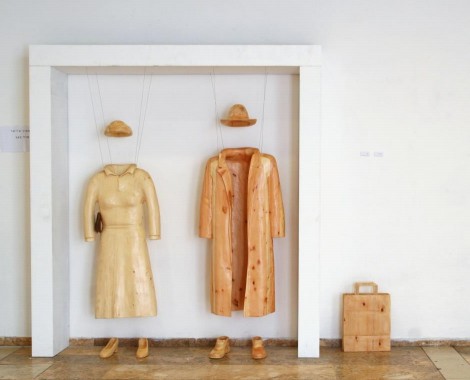 Photographed at an exhibition at the International Convention Center
Photographed at an exhibition at the International Convention Center"Why Expend the Soul for Work?"
One of the first things Shimon discovered when he returned to faith was the commandment "You shall not make for you a graven image or any likeness." "Until that time, I loved sculpting wood, creating amazing art pieces. When I returned to faith and understood there could be a problem with this—I stopped and mainly focused on creating holy arks from wood, benches for synagogues, and fulfilling various orders."
Another aspect Shimon discovered was the saying of the Sages that "a person's sustenance is decreed from Rosh Hashanah until Rosh Hashanah." "Until that day, I employed several workers in my carpentry shop, and indeed, we earned a lot of money and worked on many projects. But when I discovered the words of the Sages, I said to myself, 'What, are you foolish? Even if you work day and night, or if you only work an hour a day, you'll earn the same salary. Your sustenance is decreed from Rosh Hashanah, so why exhaust the soul for work?'"
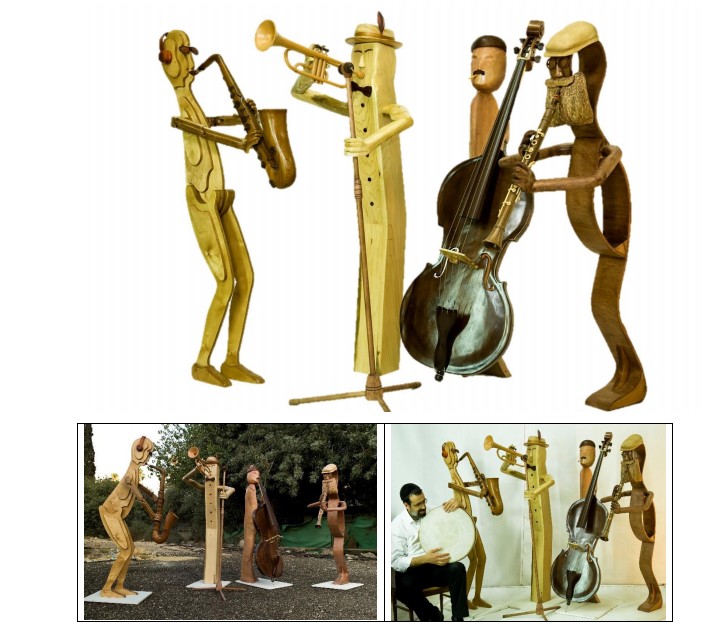
That very day, he fired all the workers and started to work alone. "It's not that my goal was to work minimal hours," he emphasizes, "not at all. On the contrary, I come to the carpentry shop every day and work here all the time, but when I employed workers, my mind was constantly focused on thoughts about money. I planned how I could earn more and more, because when you have six workers, you have to take every job offered, even if it's not profitable, because you need 70,000 shekels each month just to pay salaries. I felt I didn't need that, and it wasn't worth the effort, so I fired them all."
Shimon mentions that since that moment, he has not stopped seeing a blessing in his labor. "Shortly thereafter, I received an order from the community in Kiryat Bialik, requesting that I build a holy ark and benches for them. I devoted myself to this project, and when I finished building, there was a grand and moving Torah dedication ceremony. I arrived at the place, and the sight was unbelievable—all the vehicles stopped on the road, and the drivers came out to dance with the Torah and rejoice, all this in such a secular area; I felt I was witnessing satisfaction with my own eyes. Afterwards, I also received an order from a synagogue in Rechasim. They wanted a holy ark but requested that it be special. I, of course, love creating special things, so I planned a holy ark like in the Gate of Vilna, which appears in every Talmud. At first, they couldn't believe I would succeed in creating curtains from wood, but with the help of Hashem, it came out magnificent, and above the holy ark, I crafted a complete Talmud, all twenty volumes, made of solid wood.
"One day someone from the Rechasim council called and requested a price quote for a project to build a massive square in memory of the leader of the generation—Rabbi Ovadia Yosef, of blessed memory, and thus began my great creation. The process took months upon months, but the blessed result justifies itself, and I keep receiving compliments from people who pass by and are simply moved..."
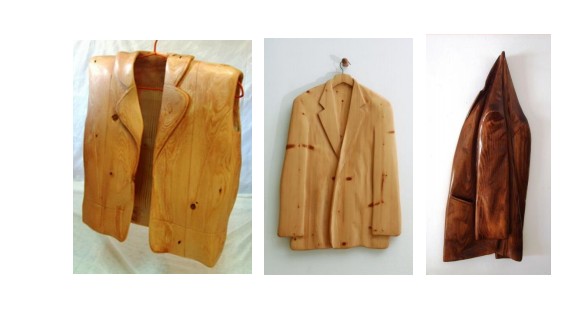
"Doing Only What I Don't Know"
More and more orders continued to arrive. "It's true that I don't earn as much as before, but in my free time, I enjoy wood carving tasks that challenge me anew each time. Over time, I discovered there's no halachic problem in carving figures, as long as you give them some flaw, because they're not considered idols, and I do indeed enjoy carving and creating various works displayed at exhibitions in Israel and abroad. For example, I carve clothes, furniture, figures, I even carved a floor rag, and many holy books. Just recently, I carved a fence for my daughter's balcony, entirely made of wood in the shape of a library of holy books. That's how a Jewish fence looks. It came out stunning."
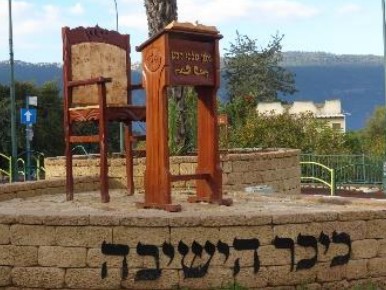
But how do you do it? After all, wood is not a flexible material, so how can you sculpt it?
"Sometimes I take a large block of wood and sculpt in it, but there are projects where I take the wood and bend it until it changes its shape. The truth is, each time it's a new challenge because I never do things I already know how to do; I strive to do only things I've never done before, and from there come the great challenge and satisfaction."
Meanwhile, groups of ba'alei teshuva and those who are coming closer also come to visit his carpentry shop, as well as just people wanting to host various events. "I host them, serve them food, and tell them about myself. I noticed that it greatly strengthens people to hear how you can be both a faithful Jew and an artist; it's not always taken for granted."
Additionally, Shimon loves the field of music very much, and he has learned to merge it with carving. "Over the years, I've built musical instruments from wood and even from gourds. Each gourd produces a different sound, and when you drum on them, it sounds wonderful. I'm also a member of two music bands, through which I perform, sometimes with the instruments I made from wood, sometimes with other instruments."
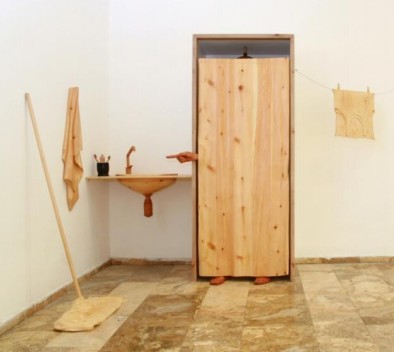
Can I ask what your next project is?
"Currently, I'm in negotiations with the Jerusalem municipality to establish a very special structure at the Bar-Ilan junction in Jerusalem, which has become the Ovadia Junction. I have a completely bombastic idea, and if it indeed materializes, it will undoubtedly be the highlight."

